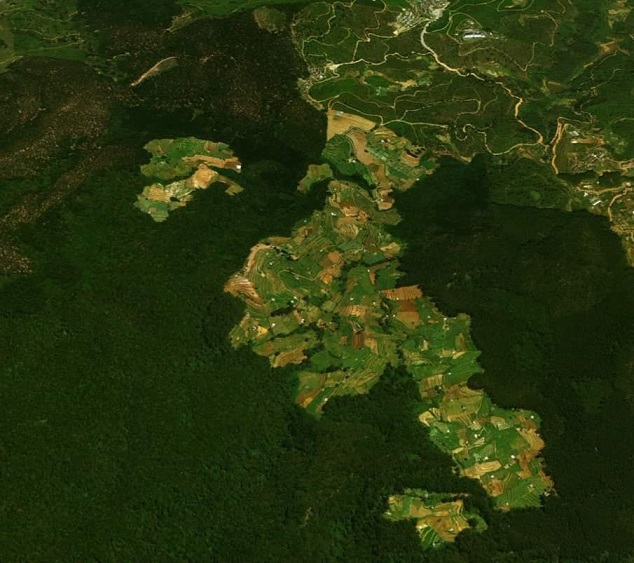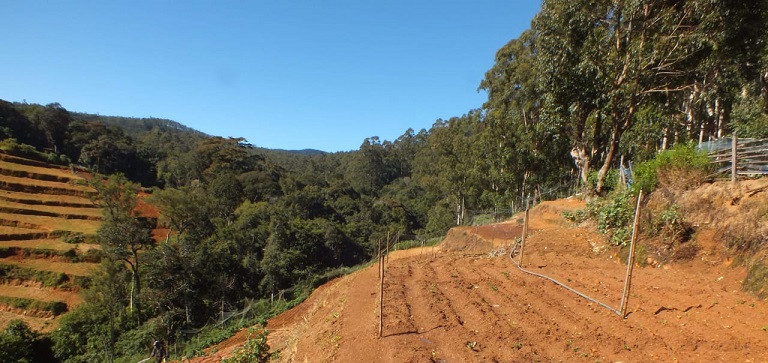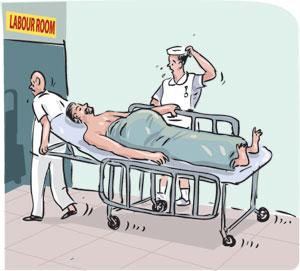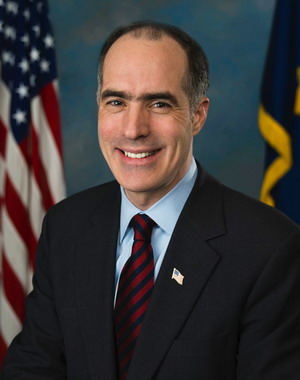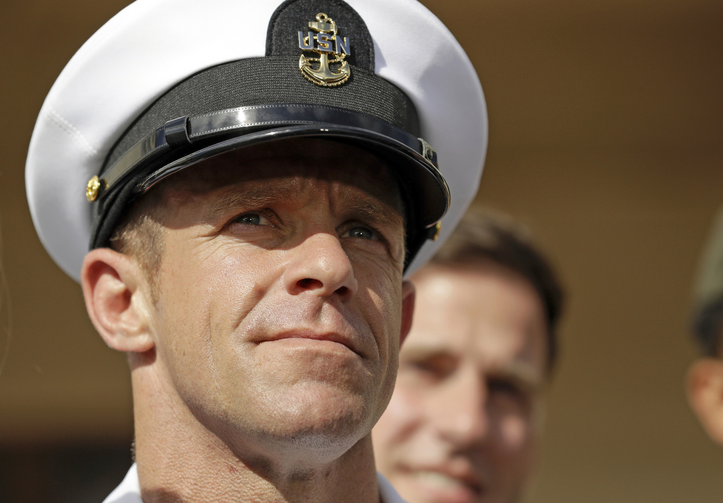හර්ෂ කුමාර් සුරියආරච්චි
මෙම ලිපියේ පළමු කොටසින් 19 වන ව්යවස්ථා
සංශෝධන කෙටුම්පත තවම ව්යවස්ථානුකුල
නිතිය බවට පත් වී නොමැති බවට කරුණු ඉදිරිපත් කරනු ලැබේ.
කථානායක තුමා අත්සන් කර ඇතැයි යන හේතුවෙන් 19 ව්යවස්ථා
සංශෝධන කෙටුම්පත නීත්යානුකුල වන්නේ යැයි පැවසීම සාවද්ය බවත් එය නිත්යානුකුලව
සම්මත නැති බව අධිකරණයේ ප්රශ්න කල හැකි බවත් මෙම ලිපියේ දෙවන කොටසින්
පැහැදිලි කර ඇත.
තුන්වන කොටසින් 19 වන ව්යවස්ථා
සංශෝධන කෙටුම්පත තවම ව්යවස්ථානුකුල නිතිය බවට පත් වී නොමැති හේතුව මත 2019 පැවති
ජනාධිපතිවරණය අවලංගු වේද නොවේද යන්න සාකච්චා කරනු ලැබේ.
සිව්වැනි කොටසින් මෙම වැරැද්දට පිළියම් සහ
මෙම වැරැද්ද ඉක්මනින්ම නිවැරදි නොකළහොත් ඇතිවන අතුරු ප්රථිපල විස්තර කර ඇත.
ලිපියේ අගට අදාල ව්යවස්ථා,
අනුව්යවස්ථා සහ නඩු තීන්දු වල අදාල කොටස් උපුටා ඇත්තේය.
හැඳින්වීම
ගෝඨාභය
රාජපක්ෂ ජනාධිපතිතුමා විශාල දේශප්රේමී ජනතා චන්දයකින් තේරී පත් වුනි. එතුමාගෙන්
ජනතාව අපේක්ෂා කල කාර්යයන් ඉටු කෙරීමට එතුමා සුදානම් බව පෙනේ. නමුත් එතුමාම කිහිප
වරක් පවසා ඇති පරිදි ඊනියා 19 වන ව්යවස්ථා සංශෝධනය එතුමාගේ කාර්යයට විශාල බාධාවක්
වී තිබේ.
ජනාධිපති තුමා
දිවුරුම් දෙන අවස්ථාවේදී නිවැරදි ව, රටේ ආරක්ෂක
අමාත්ය වරයා ලෙස කටයුතු කරන බව ජාතියට දැනුම් දෙන ලදී. 19 වන ව්යවස්ථා සංශෝධන
කෙටුම්පත තවම ව්යවස්ථානුකුලව සම්මත වී නැති බැවින් එතුමා ගේ එම ප්රකාශය
නිවැරදිය. නමුත් තවමත් ආරක්ෂක අමාත්ය ධුරය එතුමා පවරා ගෙන නැත්තේ, 19 වන ව්යවස්ථා
සංශෝධන කෙටුම්පත සම්මත වී ඇතැයි වැරදි මතයක් එතුමාට ලබා දී ඇති නිසා විය හැක.
මෙය ශ්රී
ලංකා ව්යවස්ථා සම්බන්ධ සුවිසේෂි වූ අවස්ථාවකි. පාර්ලිමේන්තුව විසින් ව්යවස්ථාවේ 83 වන වගන්තිය ප්රකාරව
ව්යවස්ථා සංශෝධනයක් සම්මත කල යුතු අවස්ථාවක, එනම් ජනමතවිචරනයකින් සම්මත කල යුතු ව්යවස්ථා සංශෝධනයක්, 83 ව්යවස්ථාව අනුව සම්මත
කිරීමට කටයුතු කල යුතු නැතැයි යන විශ්වාශයෙන් ඊට පරිභාහිර ක්රමවේදයකින්
ජනමතවිචරනයකින්
තොරව අසම්පුර්ණව
සම්මත කර තිබේ.
පාර්ලිමේන්තුව
විසින් සම්මත කල විට සාමාන්යයෙන් එහි නිත්යානුකුල භාවය පිලිබදව ව්යවස්ථානුකුලව
අධිකරණයේ ප්රශ්න කල නොහැකි වී තිබුනද වෙනත් නඩු නිමිත්තකින් ශ්රේෂ්ඨාධිකරණය ලබා
දුන් අර්ථ දැක්වීමකට අනුව සහ ඊට පෙර ශ්රේෂ්ඨාධිකරණය ලබා දුන් අර්ථ දැක්වීමකටද
අනුව කරුණු සලකා බැලීමේදී එම සංශෝධනය පාර්ලිමේන්තුව විසින් 83 වන ව්යවස්ථාව ප්රකාර
සම්මත කල යුත්තක් බව තහවුරු වී තිබේ. 19 වන ව්යවස්ථා සංශෝධන කෙටුම්පත ඒ අනුව තවම
ව්යවස්ථානුකුලව සම්මත වී නොමැති බව මෙම ලිපියෙන් පෙන්වා දෙයි.
තවම නිත්යයානුකුලව
සම්මත වී නැති,
එම නිසාම
කෙටුම්පතක් පමණක් වන්නක් රටේ ආරක්ෂාවට සහ දියුණුවට අහිතකර ලෙස බලපෑමට ඉඩ දෙන්නේ
ඇයි දැයි සොයා බලමු.
පළමු කොටස
ශ්රී ලංකාවේ
ව්යවස්ථාව සංශෝධනය කිරීමේ පරමාධිපත්ය බලය ඇත්තේ ජනතාවටයි. පවතින ව්යවස්ථාවේ
මුලධර්ම වලට පටහැනි නොවන සංශෝධන කිරීමේ බලය පමණක් ජනතාව විසින් පාර්ලිමේන්තුවට
පවරා දී ඇත. එම මුලධර්ම වලට පටහැනි සංශෝධන කල හැක්කේ ජනමත විචාරණයකින් ජනතාව ගේ
අනුමැතිය ලබා ගැනීමෙන් පසුව පමණකි.
19 වන ව්යවස්ථා සංශෝධන කෙටුම්පත ව්යවස්ථානුකුලව
සම්මත වී නැති බව
ශ්රී ලංකාවේ
ව්යවස්ථාවට අනුව යම් කිසි ව්යවස්ථා සංශෝධන කෙටුම්පතක් සම්මත කල හැකි ක්රම වේදය
“ආණ්ඩුක්රම ව්යවස්ථාව සංශෝධනය කිරීම” වශයෙන් XII වන පරිච්චේදයේ 82 වන හා 83 වන ව්යවස්ථා
මගින් දක්වා ඇත.
එම 82 හා 83
ව්යවස්ථා දෙකටම අනුව 19 වන ව්යවස්ථා සංශෝධන කෙටුම්පත පරිලිමෙන්තුවේ 2/3
චන්දයකින් සම්මත කර ජනමතවිචාරණයක් පවත්වා ජනතාව එය අනුමත කළහොත් ජනාධිපති තුමා
විසින් ඒ බව සටහන් කර අත්සන් තැබූ විට පමණක් ඒ පනත් කෙටුම්පත නිතිය බවට පත් වේ.
තවම 19 වන ව්යවස්ථා සංශෝධන කෙටුම්පත පිළිබඳව ජනමත විචාරණයක් පවත්වා නැත. එම නිසා
එය තවම නීතියක් නොවේ. මේ වන විට බල පැවැත්වෙන්නේ 18 වන ව්යවස්ථා සංශෝධනය තෙක්
වූ ව්යවස්ථා සංශෝධන පමණකි.
82 හා 83 ව්යවස්ථා
වලින් 83 වැනි ව්යවස්ථාව බලවත් වේ. (මෙහි ව්යවස්ථා වශයෙන් පවසන්නේ ව්යවස්ථාවේ
යම් ආංකික වගන්තියක් සලකන්නේ එම ආංකික ව්යවස්ථාව ලෙස බැවිනි. එය ව්යවස්ථා සංශෝධන
සමග පටලවා නොගත යුතුය. මෙතෙක් 1978 ව්යවස්ථාව
තුල ඇත්තේ සංශෝධන 17 ක් පමණි. 12 වැනි සංශෝධනයක් නැත. එමනිසා 18 වන ව්යවස්ථා සංශෝධනයක්
ලෙස නම් කල සංශෝධනයක් පවතී). 83 වැනි ව්යවස්ථාව පවසන අරුත වන්නේ, ව්යවස්ථා සංශෝධනය සදහා වූ යම් කිසි පනත් කෙටුම්පතක් 82
වැනි ව්යවස්ථාවට අනුකුල වුවත්, එම පනත් කෙටුම්පත ව්යවස්ථාවේ
1,2,3,6,7,8,9,10,11 යන ව්යවස්ථා හෝ 30(2), 62(20) යන අනු ව්යවස්ථා වලට අනුකුල නොවන්නා
වූ කාරණා සහිත පනත් කෙටුම්පතක් නම් එය පාර්ලිමේන්තුවේ දී 2/3 චන්දයකින් සම්මත කල පසු ජනමත
විචාරණයකින් ජනතාව සම්මත කර ඒ බව ජනාධිපති
තුමා සහතික කරන තෙක් එම ව්යවස්ථා සංශෝධන කෙටුම්පත නීතියක් බවට පත් නොවන බවය.
ව්යවස්ථාව
අර්ථ දැක්වීමේ බලය ඇත්තේ ශ්රේෂ්ඨාධිකරණයටයි. ශ්රේෂ්ඨාධිකරණය 2002 වසරේදී අග විනිසුරු
ප්රමුඛ සත් දෙනකුගෙන් සමන්විත විනිසුරු මඩුල්ලක් තීරණය කර ඇති පරිදි, ජනාධිපති තුමාට
පාර්ලිමේන්තුව විසිරීමට ඇති බලය අහිමි කිරීම වසර 3කට වඩා වැඩි වන්නේනම් එය 3වන ව්යවස්ථාව
උල්ලංඝනය කිරීමක් වන බවයි. එසේනම් යම් ව්යවස්ථා සංශෝධනයක් එම උල්ලංඝනය සිදු
කරන්නේනම් එම සංශෝධනය නිතිය බවට පත්වීමට
83 වන ව්යවස්ථාවට අනුව කටයුතු කල යුතුය. ඒ අනුව පාර්ලිමේන්තුවේ දී 2/3 චන්දයකින් සම්මත කල පසු ජනමත
විචාරණයකින් ජනතාව සම්මත කර ඒ බව ජනාධිපති
තුමා සහතික කල යුතුය. එසේ කරන තෙක්
එම කෙටුම්පත නීතියක් බවට පත් නොවේ. 19 වන ව්යවස්ථා සංශෝධන කෙටුම්පතට
අනුව
ජනාධිපතිට පාර්ලිමේන්තුව විසිරවිමේ බලය වසර 4 1/2ක් තෙක් අහිමි කර ඇත්තේය.
මේ බව, 2018 දී සත්
දෙනෙකුගෙන් සමන්විත විනිසුරු මඩුල්ලක් විසින් දෙන ලද තීන්දුවෙන්, පාර්ලිමේන්තුව් 2/3ක
සම්මතය පමණක් ලබා ඇති 19 වන ව්යවස්ථා සංශෝධන කෙටුම්පතට අනුව ජනාධිපති තුමාට
පාර්ලිමේන්තුව විසිරවීමට ඇති බලය වසර 4 1/2 තෙක් අහිමි කර ඇති බව පැහැදිලි කර
තිබේ. එනයින් 19 වන ව්යවස්ථා සංශෝධන කෙටුම්පත මගින් 3 වන ව්යවස්ථාව උල්ලංඝනය වී
ඇති බව 2002 දී සත්
දෙනෙකුගෙන් සමන්විත විනිසුරු මඩුල්ලක් විසින් දෙන ලද තීන්දුවෙන් තහවුරු වේ.
19 වැනි ව්යවස්ථා
සංශෝධන කෙටුම්පතින් මෙකී උල්ලංඝනය සිදු වී ඇති බැවින් එය නීතියක් බවට පත් වීමට 83
වන ව්යවස්ථාවට අනුව අවශ්ය ජනමත විචාරණය පවත්වා නොමැති බැවින් සහ ඒ අනුව
ජනාධිපතිතුමාගේ සහතිකය ලබා දී නොමැති බැවින් 19 වැනි ව්යවස්ථා සංශෝධන කෙටුම්පත
තවම නීතියක් වී නොමැත.
මෙසේ නීතියක්
වී නොමැති 19 වන ව්යවස්ථා සංශෝධන
කෙටුම්පත නීතියක් ලෙස සලකමින් පාර්ලිමේන්තුව හෝ
විධායකය හෝ අධිකරණය හෝ කටයුතු කරන්නේනම් එය එම ආයතනයන් විසින් ජනතා
පරමාධිපත්යය කොල්ල කෑමකි. ජනතාව විසින් එම ආයතන වලට ලබා දුන් විශ්වාසය භංග
කිරීමකි.
19 වැනි ව්යවස්ථා
සංශෝධන කෙටුම්පතින් මිට අමතරව 30(2) අනු ව්යවස්ථාවද
සංශෝධනය වී ඇත. එයින් මෙතෙක්
පැවති ජනාධිපති ධුර කාලය වසර 6 සිට වසර 5 දක්වා සංශෝධනය කර ඇත. 83 වන ව්යවස්ථාවෙන්
පවසන්නේ 30(2) අනු ව්යවස්ථාව
සංශෝධනය කිරීමට ජනමත විචාරණයක් අවශ්ය බවයි. (ව්යවස්ථාවේ ඉංග්රීසි
පරිවර්තනය මෙහිදී නිවැරදි නැත. එවැනි ගැටළුවක් පවතින විට සිංහල මුල් ව්යවස්ථාවට
අනුව කටයුතු කල යුතුය.) මෙම කාරණය
අරභයාද 19 වන ව්යවස්ථා සංශෝධන
කෙටුම්පත නීතියක් බවට පත්වීමට ජනමත විචාරණයක් පවත්වා එය ජනාධිපතිතුමා විසින් සහතික
කල යුතුය. එසේ අවශ්ය
ජනමත විචාරණය පවත්වා නොමැති බැවින් සහ ඒ අනුව ජනාධිපතිතුමාගේ සහතිකය ලබා දී නොමැති
බැවින් 19 වැනි ව්යවස්ථා සංශෝධන කෙටුම්පත තවම නීතියක් වී නොමැත.
ව්යවස්ථානුකුලව
නීතියක් නොවුවක් ව්යවස්ථානුකුල නීතියක් ලෙස ගෙන කටයුතු කරන සියළු දෙනාම එසේ
කිරීමෙන් ව්යවස්ථා විරෝධිව කටයුතු කරන්නන් බවට පත් වේ.
ශ්රේෂ්ඨාධිකරණය
2018 දී 19 වන ව්යවස්ථා සංශෝධන
කෙටුම්පත අරභයා නඩුවක් කතා කිරීම නිසා 19 වන ව්යවස්ථා සංශෝධන කෙටුම්පත නීතිගත වී
ඇති බවට සාවද්ය මතයක් සමහරුන් තුල පවතී. මෙම ලිපියේ මුලින් සදහන් කල පරිදි
ශ්රී ලංකාවේ
ව්යවස්ථාවට අනුව යම් කිසි ව්යවස්ථා සංශෝධන කෙටුම්පතක් සම්මත කල හැකි ක්රම වේදය
“ආණ්ඩුක්රම ව්යවස්ථාව සංශෝධනය කිරීම” වශයෙන් XII වන පරිච්චේදයේ 82 වන හා 83 වන ව්යවස්ථා
මගින් දක්වා තිබේ.
82 හා 83 ව්යවස්ථාවන් වල හෝ
ව්යවස්ථාවේ වෙන මොනයම් තැනක හෝ ජනමතවිචරනයකින් සම්මත කල යුතු ව්යවස්ථා සංශෝධනයක්
එසේ නොකොට ශ්රේෂ්ඨාධිකරණය නඩුවක් පිළිගැනීම මගින් සම්මත කල හැකි යැයි ප්රතිපාදන
සලසා නැත.
ශ්රේෂ්ඨාධිකරණය
සිදු කරන්නේ ව්යවස්ථාවක හෝ කෙටුම්පතක අන්තර්ගතය අර්ථ දැක්වීමයි. 2018 නඩු
තීන්දුවෙන් පැහැදිලි වන්නේ 2015 පැවති ව්යවස්ථාවට අනුව සිදු කල නොහැකි අසම්පුර්ණ
ක්රමවේදයකින් ව්යවස්ථාමය වෙනසක්, 19 වැනි ව්යවස්ථා
සංශෝධන කෙටුම්පත නීතියක් ලෙස පිළිගතහොත් සිදු වී ඇති බවයි. 19 වැනි ව්යවස්ථා
සංශෝධන කෙටුම්පත නීතියක් ලෙස පිළිගත යුතුද නැද්ද යන්න එම නඩුවේදී සාකච්ඡ නොකෙරුණි.
නීතිඥ වරුන්,
කථානායක තුමා, කැබිනට් මණ්ඩලය, පාර්ලිමේන්තු මන්ත්රීවරුන්, පැමිණිලි පාර්ශ්චවය හෝ
විත්ති පාර්ශ්චවය සාකච්චාවට නොගත්, උසාවියට
ඉදිරිපත් නොකළ කරුණක් ගැන ශ්රේෂ්ඨාධිකරණය තීන්දුවක් දී නැත. එවකට නීතිපතිතුමා
පමණක් 19 වැනි ව්යවස්ථා සංශෝධන කෙටුම්පතට 33 2 c
වගන්තිය
ඇතුලත් කලේ ජනමතවිචාරණයකට යෑම වැලක්වීමට බව ප්රකාශ කලද එවැනි අදහසකින් එය ඇතුලත්
කල බව අධිකරණය පිළිගෙන නොතිබුණි. එසේම පාර්ලිමේන්තුව විසින් 19 වැනි ව්යවස්ථා
සංශෝධන කෙටුම්පත නීතියක් ලෙස සම්මත කර නොගත්තක් බව උසාවියට දැනුම් දී නොතිබුණි. ඒ
අනුව ශ්රේෂ්ඨාධිකරණය එම නඩුව විභාගයට ගෙන දුන් තීන්දුවට අනුව 2015 දී
පාර්ලිමේන්තුව තුල පමණක් සම්මත වූ 19 වැනි ව්යවස්ථා සංශෝධන කෙටුම්පත තුල 2002 දී
ශ්රේෂ්ඨාධිකරණය විසින් ජනමතවිචාරණයකට නොයා සම්මත කල නොහැකියැයි සදහන් කල කාරණයක්
අඩංගු වී ඇති බව පැහැදිලි වී ඇත.
ඒ අනුව 19
වැනි ව්යවස්ථා සංශෝධන කෙටුම්පත තවම නීතියක් වී නොමැත. ව්යවස්ථානුකුලව දැනට
වලංගු වන්නේ 18 වන සංශෝධනය දක්වා වූ
ව්යවස්ථා සංශෝධන පමණි.
දෙවැනි කොටස
අප විසින්
කලින් පෙන්වා දුන් පරිදි 19 වන ව්යවස්ථා සංශෝධන කෙටුම්පත තුල 3 වන අනුලංඝනිය ව්යවස්ථාව උල්ලංඝනය
වී ඇති බව 2002 සහ 2018 නඩු තීන්දු
පිළිගැනීමෙන් තහවුරු වේ. එම නිසා ආණ්ඩුක්රම ව්යවස්ථාවේ 83 වන ව්යවස්ථාවට අනුව
එය නීතියක් බවට පත්වීමට ජනමත විචාරණයක් සහ ජනාධිපති සහතිකය අවශ්ය බැවින් ද එම
පියවරයන් මෙතෙක් සම්පුර්ණ වී නැති බැවින් ද 19 වන ව්යවස්ථා සංශෝධන
කෙටුම්පත තවම් කෙටුම්පතක් පමණක් බවත් නීතියක් නොවන බවත් පැහැදිලි ය.
ජනමතවිචාරණයකට
නොගියේ වූ නමුදු කථානායක තුමා අත්සන් කර ඇති හේතුවෙන් 19 ව්යවස්ථා සංශෝධන
කෙටුම්පත 80 ව්යවස්ථාවට අනුව නීත්යානුකුල වි ඇති බවට සාවද්ය මතයක්
ඇත. මේ පිලිබදව විචාරමු.
83 වන ව්යවස්ථාවට
අනුව කථානායක අත්සන් තැබීමෙන් ව්යවස්ථා කෙටුම්පතක් නිතිය බවට පත් නොවේ. ඒ සදහා ඊට
අමතරව ජනමත විචාරණයක් සහ ජනාධිපති සහතිකය අවශ්ය බව ඉතා පැහැදිලිව දක්වා තිබේ.
එසේම කථානායක
තුමා පාර්ලිමේන්තුවේ සම්මත වූ බවට අත්සන් තබන සහතිකයේද පහත සටහන තැබිය යුතු යුතු
බව 79 වන ව්යවස්ථාවේ අවසන්
පරිච්චේදයේ සදහන් වේ. එනම්
“79. ……………..එසේ තවදුරටත්, 83 වන ව්යවස්ථාව ප්රකාර
පනත් කෙටුම්පතක හෝ එහි යම් විධි විධානයක් ජනමතවිචාරණයකදී ජනතාව විසින් අනුමත කිරීම
අවශ්ය වන අවස්ථාවක, ඒ පනත්
කෙටුම්පත හෝ ඒ විධිවිධානය ජනතාව විසින් ජනමතවිචාරණයක දී අනුමත කරනු ලබන තෙක් නිතිය
බවට පත් නොවිය යුතු බව ද ඒ සහතිකයේ සදහන් විය යුත්තේය.”
19 වන ව්යවස්ථා
සංශෝධන කෙටුම්පත කලින් විස්තර කර ඇති පරිදි 83 ව්යවස්ථාව ප්රකාර
ජනමතවිචාරණයකට යෑ යුතු බැවින් කථානායක තුමා තම අත්සන තැබූ සහතිකයේ,
ඉහත පරිදි,
එනම්
“19 වන ව්යවස්ථා සංශෝධන පනත් කෙටුම්පත ජනතාව විසින් ජනමතවිචාරණයක දී අනුමත කරනු ලබන
තෙක් නිතිය බවට පත් නොවිය යුතු බව” ද සදහන් කල යුතු විය.
එවිට 80
(1) අනුව්යවස්ථාව
අදාල නොවේ. 80 (1) අනුව්යවස්ථාව පවසන්නේ, පාර්ලිමේන්තුව විසින්
සම්මත කරන පනත් කෙටුම්පතක් කථානායක තුමා අත්සන් තැබූ විට එය නිතිය බවට පත්වන බවයි.
නමුත් කතානායක තුමාගේ සහතිකයේම, ජනමතවිචාරණයකට යන තෙක් එය නිතිය බවට පත්
නොවිය යුතු යැයි පවසන විටදී එය නිතිය බවට පත්වන්නේ එසේ ජනමතවිචාරණ ක්රියාවලිය
සම්පුර්ණ වූ විට පමණි. 80(1) අනුව්යවස්ථාව
තවදුරටත් 80(2) අනුව්යවස්ථාවට
යටත් වේ. 80(2) අනුව්යවස්ථාවෙහි
කතානායක තුමා ගේ සහතිකය ප්රමාණවත්
නොවන විට ජනමතවිචාරණයකට යා යුතු වීමත් ජනාධිපති තුමා අත්සන් තැබිය යුතු වීමත්
සදහන් කරයි. එනමුදු 80(2) අනුව්යවස්ථාවෙහි
83 ව්යවස්ථාවෙහි
සදහන් ජනමතවිචාරණය පිළිබද කාරණා අඩංගු නොවේ. 80(2) හි එම නිසා 19 වන ව්යවස්ථා සංශෝධන
කෙටුම්පතට 83 වන ව්යවස්ථාවට
අනුව ක්රියා කල යුතු ආකාරය සෘජුව සාකච්චා නොකරයි. කෙසේ වෙතත් එම හේතුව නිසා 80(2)
නොව 80(1)
බලපවත්වන්නේ
යැයි යමෙකු තර්ක කලේ නම් වුවද, 19 වන ව්යවස්ථා සංශෝධන කෙටුම්පත අරභයා
කථානායක තුමාගේ සහතිකයෙහි, 79 වන ව්යවස්ථා ප්රකාර “ඒ පනත්
කෙටුම්පත ජනතාව විසින් ජනමතවිචාරණයක දී
අනුමත කරනු ලබන තෙක් නිතිය බවට පත් නොවිය යුතු බව” සදහන් විය යුතු බැවින් 80(1)
ට අනුව වුවද 19 වන ව්යවස්ථා සංශෝධන
කෙටුම්පත නීතියක් බවට පත්වන්නේ එවන් ජනමතවිචාරණයක දී ජනතාව විසින් එය අනුමත කරනු
ලැබූ විට පමණි.
19 වන ව්යවස්ථා
සංශෝධන කෙටුම්පත 83 වන ව්යවස්ථාව
අනුව කටයුතු කල යුත්තක් බැවින් (2002 හා 2018 ශ්රේෂ්ඨාධිකරණ
තීන්දු වලට අනුව 19 වන ව්යවස්ථා
සංශෝධන කෙටුම්පතින් 3 වන ව්යවස්ථාව
උල්ලංඝනය වන බවට සෘජුවම පැහැදිලි වන බව මේ ලිපියේ පෙන්වා දී ඇත. එවන් පනතක් සම්මත
කර ගත යුත්තේ 83 වන ව්යවස්ථාවට
අනුවයි), ඊට අනුව
ජනමතවිචරනයකින් ජනතාව එය අනුමත කල යුතු
බැවින් එතෙක් එය නිතිය බවට පත් නොවන බව 79 වන ව්යවස්ථා ප්රකාර
කථානායක තුමා තැබිය යුතු සටහන එතුමා තබා නැත.
එය අතපසු
වීමක් නිසා හෝ ශ්රේෂ්ඨාධිකරණය 19 වන ව්යවස්ථා සංශෝධන කෙටුම්පත අර්ථ දක්වන
ආකාරයට වෙනස් ආකාරයකින් බල පැවැත්වේ යැයි විශ්වාශ කල නිසා හෝ විය හැක. එය ව්යවස්ථානුකුල
නොවන බව දැනගත්තේ 2018 පාර්ලිමේන්තුව විසිරවිම පිලිබදව වූ නඩු තීන්දුවෙන් පසු වීමට
බොහෝ ඉඩ ඇත. නමුත් ව්යවස්ථානුකුලව
අප පිලිගතයුත්තේ ශ්රේෂ්ඨාධිකරණ අර්ථ දැක්වීම බැවින් එතුමා එම සටහන නොයෙදීම ව්යවස්ථානුකුල
නොවේ.
ව්යවස්ථානුකුලව
නිවැරදි නොවන බැවින් කථානායක තුමා මේ වනවිට 19 වන ව්යවස්ථා සංශෝධන
කෙටුම්පත පාර්ලිමේන්තුවේ සම්මත වී යයි අත්සන් කරන ලද සහතිකයද වලංගු නොවේ. එම අනුව 19 වන ව්යවස්ථා සංශෝධන
කෙටුම්පත පාර්ලිමේන්තුව තුල සම්මත වීමේ පියවරද තවම පුර්ණ වී නැත.
එම නිසා 19 වන ව්යවස්ථා සංශෝධන
කෙටුම්පත නීතියක් බවට පත්විමටනම් 79 ව්යවස්ථාවේ අවසන් පරිච්චේදය පරිදි
කථානායකතුමා සටහන් කොට අත්සන් තබා, 83 වන ව්යවස්ථාව ප්රකාර ජනමතවිචාරණයක්
පවත්වා එහිදී ජනතාව අනුමත කළහොත් ජනාධිපති තුමා ඒ බව සහතික කොට අත්සන් තැබිය
යුතුය. එතෙක් 19 වන ව්යවස්ථා
සංශෝධන කෙටුම්පත කෙටුම්පතක් පමණි. නීතියක් නොවේ.
එසේම 80(3) අනුව්යවස්ථාවේ මෙසේ
සදහන් වේ.
80^3&
wjia:dfpdaÑ; mßÈ ckdêm;sjrhd f.a fyda l:dkdhljrhdf.a iy;slh mk;a flgqïm;la u;
igyka lrkq ,enQ miq tu mk;a flgqïm; kS;sh njg m;a jk wjia:djl ta mkf;ys
j,x.=Ndjh ms<sn|j mÍlaId lsÍu” ta ms<sn|j u;hla m%ldY lsÍu fyda ljr
jQ fyda wdldrhlska m%Yak lsÍu lsisu wêlrKhla fyda úksYaph wêldrhla fyda úiska
fkdl< hq;af;a h’”
මෙයින්
පැහැදිලිවන කාරණයක් නම් එම අවසාන සහතික කිරීම අවස්ථාවෝචිත පරිදි ජනාධිපති තුමා හෝ
කථානායක තුමා කලයුතු බවයි. එනම් ජනමතවිචාරණයකට යා යුතු පනතක් නම් ජනමතවිචාරණයෙන්
ජනතාව අනුමත කලේනම් එවිට ජනාධිපති තුමාද, එසේ ජනමතවිචාරණයකට
නොයා පාර්ලිමේන්තුවේ පමණක් සම්මත කල හැකි පනතක් නම් එවිට කථානායක තුමාද අත්සන් කල
යුතු බවයි. එසේ අවස්ථාවෝචිත පරිදි අත්සන් කල විට එම පනත් කෙටුම්පත නිතිය බවට පත්
වන බවත්ය.
පනත්
කෙටුම්පතක් පාර්ලිමේන්තුව සම්මත කල යුත්තේ ආණ්ඩුක්රම ව්යවස්ථාවට අනුකුලව බව 78 වන ව්යවස්ථාවේ දෙවන
අනුව්යවස්ථාවේ පැහැදිලිව දක්වා ඇත.
ජනමතවිචාරණයකට
යා යුතු 19 වන ව්යවස්ථා සංශෝධන
කෙටුම්පත මත ඒ අනුව අවස්ථාවෝචිත පරිදි තවම ජනාධිපතිතුමාගේ සහතිකය සටහන් කර නැති
බැවින් 19 වන ව්යවස්ථා සංශෝධන
කෙටුම්පත තවම නීතියක් වී නොමැත.
නීතියක් නොවන,
කෙටුම්පතක්
පමණක් වන 19 වන ව්යවස්ථා
සංශෝධන කෙටුම්පතෙහි අඩංගු සමහර කාරණා වෙනස් කිරීමට අලුතින් ව්යවස්ථා සංශෝධන
කෙටුම්පත් (21 හා 22 ලෙස) ඉදිරිපත් කිරීම
හුදෙක් නිතියානුකුල නොවූ 19 වන ව්යවස්ථා සංශෝධන කෙටුම්පත පස්ස දොරින්
නීතිගත කිරීමට දරන ප්රයත්නයක් නම් එය වරක් මංකොල්ල කෑ ජනතා පරමාධිපත්යය නැවතත්
මංකොල්ල කෑමකි.
පාර්ලිමේන්තුව
මෙම තත්වය නිසියාකාරව අධ්යයනය කොට තම අතපසුවිම මහත්මා ගුනයෙන් යුතුව පිළිගෙන 19 වන ව්යවස්ථා සංශෝධන
කෙටුම්පත ව්යවස්ථානුකුලව නීතිගත කිරීමට කටයුතු කරන්නේනම්, ජනතාව පාර්ලිමේන්තුව
කෙරෙහි තැබූ විශ්වාෂය තරමක් දුරට හෝ ආරක්ෂා වනු ඇත. එතෙක් 19 වන ව්යවස්ථා සංශෝධන
කෙටුම්පත නීතියක් ලෙස නොසැලකීම වගකිවයුතු පාර්ලිමේන්තුවක යුතුකමකි.
තෙවැනි කොටස
19 වන ව්යවස්ථා
සංශෝධනය නීතියක් නොවීම නිසා 2019 ජනාධිපතිවරණය අවලංගු වේද?
19 වන ව්යවස්ථා
සංශෝධන කෙටුම්පත නීතියක් නොවන නිසා 19 වන ව්යවස්ථා සංශෝධනයට අනුව පැවැත්වූ
ජනාධිපතිවරණය අවලංගු වේ යැයි සාවද්ය මතයක් පවතී. අප ඒ ගැන විචාරමු.
පළමුවෙන් අප
තේරුම් ගත යුතු කරුණ නම් 19 වන ව්යවස්ථා සංශෝධන කෙටුම්පත 2019 ජනාධිපතිවරණය ප්රකාශිත
දිනයේ නීතියක් වී නොමැති
බවයි. එම නිසා 2019 ජනාධිපතිවරණය 19 වන ව්යවස්ථා සංශෝධනයට අනුව පැවැත්වූයේයැයි
පැවසීමම වැරදි බවයි. මක් නිසාද යත් ව්යවස්ථාමයව නීතියක් බවට පත්වී නැති කෙටුම්පතකට
අනුව ජනාධිපතිවරණයක් පැවැත්විය නොහැකි බැවිනි. එසේ නම් ජනාධිපතිවරණය පවත්වා ඇත්තේ 18 වන ව්යවස්ථා
සංශෝධනයට යටත්වයි.
2019 ජනපතිවරණයේදී
විශාල වැඩි චන්ද ප්රමාණයකින් ජනාධිපති ධුරයට සුදුස්සා ජනතාව විසින් සිය චන්දයෙන්
තීරණය කරන ලදී. ඒ මේ රටේ පරමාධිපත්ය බලයයි. එම ජනතා තේරීමට අභියෝග කල හැක්කේ
ජනතාවට සිය චන්දය නිදහසේ භාවිත කිරීමට නොහැකි වූවානම් හෝ වෙනත් යම් මැතිවරණ අක්රමිකතාවක්
සිදු වූවානම් හෝ පමණි.
2019 ජනාධිපතිවරණය
ප්රකාශිත දිනයේ සිට ප්රථිපල නිකුත් කරන තෙක්ම ඉතා සාධාරණව හා නිදහස්ව පැවති බවට
ජයග්රාහී පිල, පරාජිත පිල්
සියල්ල, ස්වාධින
මැතිවරණ නිරීක්ෂකයින්, තානාපතිවරුන්,
දේශීය සහ
විදේශීය සංවිධාන පමණක් නොව එක්සත් ජාතීන්ගේ සංවිධානය පවා පිළිගන්නා ලදී. එම නිසා
ජනතාව නිදහසේ තම චන්දය ප්රකාශ කර ඇති බව පැහැදිලිව සියලු දෙනාම එක සේ පිළිගෙන ඇත.
එසේම කිසිම
මැතිවරණ අක්රමිකතාවයක් වූ බවට කිසිම පුද්ගලයකු අධිකරණය හමුවට ගොස්ද නැත.
එම නිසා ජනතා
පරමාධිපත්ය බලය නිසි ලෙස ජනාධිපතිවරණයේදී ප්රකාශ වී තිබේ. එයට අභියෝග කල නොහැක.
2019 ජනාධිපතිවරණය
අවලංගු
නොවේ.
අවලංගු
කල නොහැක.
කෙසේ වතුදු
හුදු අධ්යයන පරමාර්ථව 18 වන ව්යවස්ථා
සංශෝධනය තෙක් එයද ඇතුළුව ව්යවස්ථාවට අනුකුලව 2019 ජනාධිපතිවරණය
පැවත්වුයේදැයි යන්න සොයා බලමු.
2019 ජනාධිපතිවරණය
පැවත්වු
ව්යවස්ථාවට
අනුකුලව (18 වන සංශෝධනය
ඇතුළුව ඒ දක්වා වූ) ජනාධිපති ධුර
කාලය වසර 6කි.
බලයේ සිටින
ජනාධිපතිවරයා තරග නොකරන අවස්ථාවක කලින් ජනාධිපතිවරණයෙන් වසර 5කදී ජනාධිපතිවරණයක්
පැවැත්වීමේ ප්රතිපාදන එවකට නීතියක් වූ ව්යවස්ථාවේ නැත. එම නිසා 2018
ජනාධිපතිවරණය
ප්රකාශ කිරීම නීති විරෝධිය. නමුත් කිසිවෙකුත් එයට අභියෝග කලේ නැත. එසේ අභියෝග
නොකළේ ප්රකාශිත දිනය නීති විරෝධී වුවත් ඉක්මන් ජනපතිවරණයක් සැම පුරවැසියෙකුම
අපේක්ෂා කල බැවිනි. විශේෂයෙන්ම එවකට බලයේ සිටි ජනාධිපතිතුමාගේ අපේක්ෂාවද එයම විය.
එම නිසා එසේ
ජනාධිපතිවරණය පැවැත්වීම ජනතාවගේ අභිලාෂයයි. එයට දැන් අභියෝග කල
නොහැක.
(ජනාධිපතිවරණ
කැදවීමට විරුද්ධ නොවුනේ ජනාධිපතිවරණය පැවැත්වුයේ 19 වන ව්යවස්ථාවට අනුව යෑයි වැරදි ලෙස සිත
සිටි නිසා යෑයි යමෙකුට තර්ක කල නොහැක. මක් නිසාද යත් නිතිය නොදැන සිටීම නිදහසට
කාරණයක් නොවන බැවිනි).
තවදුරටත් වෙනත්
ආකාරයකින් වැදගත් පුර්වාදර්ශයක්ද අප හමුවේ ඇත. 2015 වසරේදී මොහාන් පිරිස් මහතා කටයුතු කරමින්
සිටි අග විනිසුරු තනතුරට එතුමාව පත් කලේ නීති විරෝධිව යැයි යන පදනම මත එතුමාව නොසලකා
අගවිනිසුරු ලෙස ඊට පෙර සිටි අගවිනිසිරු තුමියට රාජකාරි කිරීමට
කටයුතු කල
අතර, එනමුදු එම නීති විරෝධි
යැයි සැලකු පත්
වීමෙන් පසු එතුමා ලබා දුන් නඩු තීන්දු අවලංගු නොකරන ලදී. එම රාජ්ය ක්රියාවලිය
කිසිදු ආයතනයකින් (පාර්ලිමේන්තුව, අධිකරණය හා විධායකය යන
ආයතන) ප්රතික්ෂේප නොවුණු අතර එවන් අවස්ථාවකදී රාජ්ය ප්රතිපත්තිය ඒ ආකාර විය
යුතු බව රජය පිළිගෙන ඇත. එය රාජ්ය ප්රතිපත්තිය විය.
ඒ රාජ්ය ප්රතිපත්තිය
අනුව 18 වන ව්යවස්ථා
සංශෝධනයට අනුව ජනාධිපතිවරණයට දින නිර්ණය කිරීම නීති විරෝධී වුවද එම නීති විරෝධී
දින නිර්ණය කිරීම නිසා ඇතිවූ
මැතිවරණය හෝ එහි ප්රතිපල අවලංගු නොවේ.
19 වන ව්යවස්ථා
සංශෝධන කෙටුම්පත 82 වන ව්යවස්ථාවට
අනුවද ව්යවස්ථානුකුලව සම්මත වී නැති බව වෙනත් ලිපියකින් පෙන්වා දීමට බලාපොරොත්තු
වෙමි.
සිව්වැනි කොටස
අතුරු ප්රතිපල සහ පිළියම්
මෙතෙක්
පැහැදිලි කල පාර්ලිමේන්තුව තවම ව්යවස්තනුකුලව් සම්මත කර නැති 19 වන ව්යවස්ථා සංශෝධන
කෙටුම්පත අරභයා පාර්ලිමේන්තුවට ගත හැකි ව්යවස්ථානුකුල හා සරලම ක්රියා මාර්ගය
වනුයේ, මෙම කෙටුම්පත ව්යවස්ථානුකුලව
නැවතී ඇති පියවර සම්පුර්ණ කිරීමය. එනම් කථානායක තුමා විසින් 79 වන ව්යවස්ථා ප්රකාරව
ක්රියා කර ජනමත විචාරණයකින් අනුමත වන තෙක් මෙය නිතිය නොවන්නේයැයි යන සටහන යොදා
දැන් අත්සන් කිරීමය. ඉන් පසු එම සටහනට අනුකුලව ජනමතවිචාරණයක් පවත්වා ඒ අනුව කටයුතු
කිරීමය. ඒ සදහා මුළු පාර්ලිමේන්තුවම කටයුතු කල යුතුය.
ශ්රී ලංකාවේ
පුරවැසියන් නීති ගරුක වීම අවශ්යය. ඔවුන් ඊට කැමතිය. දැනට ව්යවස්ථානුකුලව
නිතිය වන්නේ 18 වන සංශෝධනය තෙක්
පමණි.එහෙත් රජයත්,
විධායකයත්, පාර්ලිමේන්තුවත්
නීතියක් නොවන දෙයක් නීතියක් ලෙස ගෙන නීති ගරුක නොවී කටයුතු කරමින් පවතී. ජනතාවත් ඒ
අනුව නීති ගරුක නොවී කටයුතු කළහොත් ඊට විරුද්ධ විය නොහැකි වනු ඇත.
ජනමතවිචාරණයකින්
ජනතාව අනුමතකළහොත් මිස වෙනස් කල නොහැකි 3 වන ව්යවස්ථාව
එසේ උල්ලංඝනය වන්නේ කෙස්දැයි 2002 වසරේදී ශ්රේෂ්ඨාධිකරණයේ
අග විනිසුරු ප්රමුඛ සත් දෙනකුගෙන් සැදී විනිශ්චය මඩුල්ලක් අර්ථ දක්වා ඇත.
පාර්ලිමේන්තුවේ මන්ත්රී වරුන් 2/3 ක් චන්දය
දුන් 19 වන ව්යවස්ථා සංශෝධන
කෙටුම්පත තුල එම උල්ලංඝනය සිදු වී ඇති බව 2018 වසරේදී ශ්රේෂ්ඨාධිකරණයේ
අග විනිසුරු ප්රමුඛ සත් දෙනකුගෙන් සැදී විනිශ්චය මඩුල්ලක් දුන් තීන්දුවෙන් තහවරු
වී ඇත. එහෙත් ජනමතවිචාරණයක් පවත්වා නැත. ජනතාවගේ කැමැත්ත අසා නැත.
මෙලෙස නීති
විරෝධී ලෙස පාර්ලිමේන්තුව ජනමත විචාරණයකට නොයා
3 වන ව්යවස්ථාව
උල්ලංගනය වන ව්යවස්ථා සංශෝධනය සදහා වූ පනත් කෙටුම්පතක් නීති ගත කල බවක් පවසමින්
සිටි. රජයත් එය අනුමත කරමින් සිටි. මෙම ක්රම වේදය පිළිගතහොත් ඒ ආකාරයටම
ජනමතවිචාරණ නොපවත්වා 9 වන ව්යවස්ථාවත්
වෙනස් කරනු ඇත.එනම් රජය බුදු දහම අරකෂා කල යුතු නැතැයි සම්මත කර ගනු ඇත. ශ්රී
ලංකාව ඒකීය රජයක් නොව ෆෙඩරල් රාජ්යයක් යයි සම්මත කර ගනු ඇත.
තවත් බොහෝ දේ
කරනු ඇත.
එම නිසා ව්යවස්ථානුකුලව
සම්මත වී නැති 19 වන ව්යවස්ථා සංශෝධන
කෙටුම්පත ව්යවස්ථානුකුලව සම්මත වී ඇති බවට රජය සහ පාර්ලිමේන්තුව ජනතාවට බල
කිරීමෙන් සහ ජනතාව රැවටීමෙන් වැලකී තමන් අතින් වෙමින් පවතින වැරැද්ද නිවැරදි කර
ගැනීම සුදුසු වේ. එසේ නොමැතිනම් මෑත කාලයේ බිහිවූ රජයන් විසින් සිදු කරමින් පවතින
රටේ සම්පත් හොරකම් කිරීම, රටේ සම්පත්
විදේශ වලට පවරා දීම,
මහ බැංකුව
කොල්ලකෑම, දේශීයත්වය ඍජුවම හා
වක්රව විනාශකිරීම ට අමතරව ජනතා පරමාධිපත්යයට එරෙහිව ගොස් ශ්රී ලංකාවේ ව්යවස්ථාවද
මංකොල්ල කා ඇති බව අනාගත ඉතිහාසයේ කළු අකුරින් ලියැවෙනු ඇත. එයට ඉඩදුනහොත් එවන්
පාපයන් ඉදිරියේ නිවටව කල් ගත කරමින් මියැදුණු පරම්පරාවක් ලෙස වර්තමාන පරම්පරාවද
ඉතිහාස ගත වනු ඇත.
එයට ඉඩ
නොදෙමු. වසර දහස් ගණනකට පසුත් අප අගය කරන අපගේ අතීත සැබෑ රජ වරුන් මෙන් වූ
නායකයින් යලිත් බිහි කරමු.
හර්ෂ කුමාර්
සුරියආරච්චි
harshakumarsuri@hotmail.com
78, 79, 80, 82 සහ 83 වන ව්යවස්ථා
78 වන ව්යවස්ථාව
|
79′ md¾,sfïka;=j úiska iïu; lrk ,o iEu mk;a flgqïm;l
u fuys my; oelafjk wdlD;sfhys jQ iy;slhla l:dkdhljrhd úiska iajlSh w;aik
we;sj igyka l< hq;af;ah(-
—^mk;a flgqïmf;a ¨yq~q kduh fuys i|yka lrkak&
kue;s
fï mk;a
flgqïm; md¾,sfïka;=j úiska h:d mßÈ iïu; lrk ,o nj fuhska iy;sl lrñ’˜
mk;a flgqïm;
iïu; lrk ,oafoa hï nyq;r Pkaohlska o ta nyq;r Pkaoh o ta iy;slfhys i|yka lrkq
,eìh yelafla h(
tfia jqj o” 82 jeks jHjia:dfõ fyda 83 jeks jHjia:dfõ fyda 84 jeks jHjia:dfõ fyda 123
jeks jHjia:dfõ ^2& jeks wkq jHjia:dfõ fyda úêúOdk m%ldr mk;a flgqïm; iïu;
lsÍu i|yd úfYaI nyq;r Pkaohla wjYH jk wjia:djl § ta mk;a flgqïm; l:dkdhljrhd
úiska iy;sl l< hq;af;a ta mk;a flgqïm; ta úfYaI nyq;r Pkaofhka iïu; ù
we;akï muKls’
tfia ;jÿrg;a” 83 jeks jHjia:dj m%ldr mk;a
flgqïm; fyda tys hï úêúOdkhla cku; úpdrKhl § ck;dj úiska wkqu; lsÍu wjYH jk
wjia:djl” ta mk;a flgqïm; fyda ta úêúOdkh ck;dj úiska cku; úpdrKhl §
wkqu; lrk ,nk f;la kS;sh njg m;a fkdúh hq;= nj o ta iy;slfha i|yka úh hq;af;a
h’
|
l:dkdhljrhdf.a
iy;slh’
|
79 වන ව්යවස්ථාව
80 වන ව්යවස්ථාව
|
80′
^1& md¾,sfïka;=j úiska iïu;
lrk ,o mk;a flgqïm;la u; l:dkdhljrhdf.a iy;slh Tyqf.a w;aik we;sj igyka lrkq
,enQ úg fï jHjia:dfõ ^2& jeks wkq jHjia:dfõ úêúOdkj,g hg;aj th kS;sh njg
m;a jkafka h’
^2& hïlsis mk;a flgqïm;la
fyda hïlsis mk;a flgqïm;l hïlsis úêúOdkhla fyda cku; úpdrKhla u.ska ck;djf.a wkqu;h
i|yd bÈßm;a lsÍug wfmalaId lrk nj wud;H uKav,h úiska iy;sl lr we;a;d jQ
wjia:djl fyda” hïlsis mk;a flgqïm;la fyda hïlsis mk;a flgqïm;l hïlsis
úêúOdkhla fyda cku; úpdrKhl § ck;dj úiska wkqu; lsÍu wjYH nj fY%aIaGdêlrKh
úiska ;SrKh lr we;a;d jQ wjia:djl fyda hïlsis mk;a flgqïm;la 85 jeks
jHjia:dfõ ^2& jeks wkqjHjia:dj hgf;a cku; úpdrKhla u.ska ck;dj fj; bÈßm;a
lrk wjia:djl” ta mk;a flgqïm; fyda ta úêúOdkh ck;dj úiska cku; úpdrKhl §
85 jeks jHjia:dfõ ^3& jeks wkqjHjia:djg wkql+,j wkqu; lr we;s nj
ckdêm;sjrhd úiska iy;sl lrkq ,enQ úg muKla ta mk;a flgqïm; fyda ta mk;a
flgqïmf;ys tlS úêúOdkh fyda kS;sh njg m;a jkafka h’ tfia wkqu; lrkq ,enQ iEu
mk;a flgqïm;l u fuys my; oelafjk wdlD;sfhys jQ iy;slhla” ckdêm;sjrhd úiska
iajlSh w;aik we;sj igyka l< hq;af;a h(-
—fï mk;a flgqïm;$úêúOdkh cku;
úpdrKhl § ck;dj úiska h:d mßÈ wkqu; lrk ,o nj fuhska iy;sl lrñ’˜
tjeks iy;slhla ckdêm;sjrhd úiska mk;a flgqïm;l igyka
lsÍu –
^w& ta mk;a flgqïm; ck;dj úiska wkqu; lrk ,o
cku; úpdrKfha j,x.=Ndjh wNsfhda. Lrk lsis fm;aiula bÈßm;a lrkq fkd,enQ
wjia:djl” tjeks cku; úpdrKhl j,x.=Ndjh wNsfhda. lrk fm;aiula Bg wod<
kS;sh hgf;a bÈßm;a l< yelafla hï ld, iSudjla we;=<; o ta ld, iSudj bl=;a
ùfuka miqj o ¦
^wd& ta mk;a flgqïm; ck;dj úiska wkqu; lrk
,oafoa hï cku; úpdrKhl § o ta cku; úpdrKfha j,x.=Ndjh wNsfhda. lrk fm;aiula
bÈßm;a lrkq ,enQ wjia:djl” ta cku; úpdrKh j,x.= njg fY%aIaGdêlrKh úiska
;SrKh lrkq ,eîfuka miqj o¦
ñi” fkdl< hq;af;a h’
ta iEu iy;slhla u wjidkd;aul yd
;SrKd;aul jkafka h’ ta iy;slh ms<sn|j ljr jQ fyda wêlrKhl § m%Yak fkdl<
hq;af;a h’
^3& wjia:dfpdaÑ; mßÈ ckdêm;sjrhd f.a fyda l:dkdhljrhdf.a iy;slh mk;a flgqïm;la u;
igyka lrkq ,enQ miq tu mk;a flgqïm; kS;sh njg m;a jk wjia:djl ta mkf;ys j,x.=Ndjh
ms<sn|j mÍlaId lsÍu” ta ms<sn|j u;hla m%ldY lsÍu fyda ljr jQ fyda
wdldrhlska m%Yak lsÍu lsisu wêlrKhla fyda úksYaph wêldrhla fyda úiska
fkdl< hq;af;a h’
|
mk;a flgqïm;la
kS;sh njg m;aùu’
|
82 හා 83 වන ව්යවස්ථා
|
XII jeks mßÉfþoh
jHjia:dodhlh
wdKavql%u jHjia:dj ixfYdaOkh
lsÍu
82′ ^1&
wdKavql%u jHjia:dfõ hïlsis úêúOdkhla ixfYdaOkh lsÍu i|yd jQ mk;a flgqïm;la fõ
kï tfia mßÉýkak lrkq ,nkakd jQ fyda fjkia lrkq ,nkakd jQ fyda tl;= lrkq
,nkakd jQ úêúOdk o wdkqIx.sl ixfYdaOkhla fjf;d;a th o” mk;a flgqïmf;ys
ksYaÑ; j m%ldYs;j we;akï ñi o ta mk;a flgqïm; wdKavql%u jHjia:dj ixfYdaOkh
lsÍu i|yd jk mk;la njg tys §¾> kdufhys úia;r fldg we;akï ñi o ta mk;a
flgqïm; md¾,sfïka;=fõ kHdh m;%hg we;=<;a fkdl< hq;af;a h’
^2&
wdKavql%u jHjia:dj mßÉýkak lsÍu i|yd jQ mk;a flgqïm;la fõ kï ta mk;a
flgqïmf;ys wdKavql%u jHjia:dj fjkqjg kj wdKavql%u jHjia:djla m%;sfhdackh lrk úêúOdk we;=<;a
fõ kï ñio ta mk;a flgqïm; wdKavql%u jHjia:dj mßÉýkak fldg ta fjkqjg kj
wdKavql%u jHjia:djla m%;sfhdackh lsÍu msKsi jk mk;la njg tys §¾> kdufhys úia;r
fldg we;akï ñi o ta mk;a flgqïm; md¾,sfïka;=fõ kHdh m;%hg we;=<;a fkdl<
hq;af;a h’
^3&
l:dkdhljrhdf.a u;h wkqj hïlsis mk;a flgqïm;la fï jHjia:dfõ ^1& jeks
wkqjHjia:dfõ fyda ^2& jeks wkqjHjia:dfõ fyda kshuhkag wkql+,j
ms<sfh< ù ke;akï ta kshuhkag wkql+, jk mßÈ ta mk;a flgqïm; ixfYdaOkh lrkq
,enqjfyd;a ñi ta mk;a flgqïm; iïu; lr .ekSug wjYH mshjr fkd.; hq;= hhs Tyq
úiska úOdk l< hq;af;a h’
^4&
fï jHjia:dfõ by;ska jQ úêúOdkj,g l=ula i|ykaj ;snqK o” fï jHjia:dfõ
^1& jeks wkqjHjia:dfõ fyda ^2& jeks wkqjHjia:dfõ fyda kshuhkag wkql+,
jk mk;a flgqïm;la md¾,sfïka;=j úiska ixfYdaOkh lsÍu kS;Hkql+, jkafka h’ tfia
jqj o” tfia ixfYdaOkh lrkq ,enQ úg mk;a flgqïm; ta kshuhkag wkql+, úh hq;af;a
h’
^5&
wdKavql%u jHjia:dfõ hïlsis úêúOdkhla ixfYdaOkh lsÍu i|yd jQ fyda wdKavql%u
jHjia:dj mßÉýkak fldg ta fjkqjg fjk;a wdKavql%u jHjia:djla m%;sfhdackh lsÍu i|yd
jQ fyda hïlsis mk;a flgqïm;lg mlaIj fok ,o Pkao ixLHdj ^fkdmeñKs uka;%Sjrhka
o we;=¿j& uq¿ uka;%S ixLHdfjka ;=fkka follg wvq fkdjqjfyd;a iy 80 jeks
jHjia:dfõ fyda 79 jeks jHjia:dfõ
úêúOdkj,g wkql+,j” wjia:dfjdaÑ; mßÈ ckdêm;sjrhd úiska fyda l:dkdhljrhd
úiska fyda iajlSh w;aik we;sj iy;slhla tys igyka lrkq ,enQ úg ta mk;a flgqïm;
kS;sh njg m;a jkafka h’
^6&
hïlsis kS;shl hïlsis úêúOdkhla” fï jHjia:dfõ by;ska jQ kshuhkag wkql+,j
mkjkq ,enqjfyd;a ñi thska wdKavql%u jHjia:dj ke;fyd;a wdKavql%u jHjia:dfõ
hïlsis úêúOdkhla ixfYdaOkh fkdjkafka h ¦ mßÉýka k fkdjka fka h ¦ m%;sfhdackh fkdjkafka h’ ;j o”
tfia ixfYdaOkh jkakdla fia fyda mßÉýkak jkakdla fia fyda m%;sfhdackh jkakdla
fia fyda fkdie,lsh hq;af;a h’ ;j o” tfia w¾: ksrEmKh fkdl< hq;af;a h
¦ f;areï fkd.; hq;af;a h’
^7&
fï mßÉfþofhys —ixfYdaOkh˜ hkakg mßÉýkak lsÍu” fjkia lsÍu iy tl;= lsÍu o
we;=<;a fõ’
|
wdKavql%u jHjia:dj
ixfYdaOkh lsÍu
fyda mßÉýkak lsÍu
m%ldYs;j u úh hq;=
nj’
| |
|
83′
82 jeks jHjia:dfõ úêúOdkhkays mgyeksj l=ula i|ykaj we; o –
^w& 1
jeks” 2 jeks” 3 jeks” 6 jeks” 7 jeks” 8 jeks” 9
jeks” 10 jeks iy 11 jeks jHjia:dj,
fyda
fï jHjia:dfjys fyda úêúOdk ixfYdaOkh
lsÍu i|yd jQ fyda
mßÉýkak
fldg m%;sfhdackh lsÍu i|yd jQ fyda ta jHjia:dj, hï úêúOdkhlg wkkql+, jkakd jQ
fyda mk;a flgqïm;lg ¦ iy
^wd& 30
jeks jHjia:dfõ ^2& jeks
wkqjHjia:dfõ ke;fyd;a 62 jeks jHjia:dfõ ^2& jeks
wkqjHjia:dfõ
úêúOdk ixfYdaOkh lsÍu fyda mßÉýkak fldg m%;sfhdackh lsÍu fyda i|yd jQ
ke;fyd;a ta úêúOdkj,g wkkql+, jkakd jQ o” wjia:dfjdaÑ; mßÈ
ckdêm;sjrhdf.a Oqr ld,h idjqreoaola blaujd §¾> lrkakd jQ ke;fyd;a
md¾,sfïka;=j mj;akd ld,h idjqreoaola blaujd §¾> lrkakd jQ o mk;a flgqïm;lg”
mlaIj fok ,o Pkao ixLHdj ^fkdmeñKs
uka;%Sjrhka o we;=¿j& uq¿ uka;%S ixLHdfjka ;=fkka follg wvq fkdfõ kï
o” cku; úpdrKhl § th ck;dj úiska wkqu; fldg we;akï o” 80 jeks jHjia:djg wkql+,j ckdêm;sjrhd úiska tys
iy;slhla iajlSh w;aik we;sj igyka fldg we;akï o” ta mk;a flgqïm; kS;sh
njg m;a jkafka h’
|
we;eï mk;a
flgqïm;a cku;
úpdrKhl § wkqu;
lsÍu’
|
| | | |
නඩු
තීන්දුවලින් අදාල කොටස් උපුටා ගැනීම් (ලිපියේ දිග වැඩි වීම වැලැක්වීම සදහා
සම්පුර්ණ නඩු තීන්දු උපුටා දක්වා නැත).
19 වන ව්යවස්ථා
සංශෝධන කෙටුම්පත පිළිබද 2002 ශ්රේෂ්ඨාධිකරණ
නඩු තීන්දුවෙන් ..
xxxxxxxxxxxxxxxxxxxxxxxxxxxxxxxxxxxxxxx
xxxxxxxxxxxxxxxxxxxxxxxxxxxxxxxxxxxxxxx
පාර්ලිමේන්තුව විසිරවිම පිළිබද ජනාධිපති බලතල සම්බන්ධ 2018
නඩු තීන්දුවෙන්…



